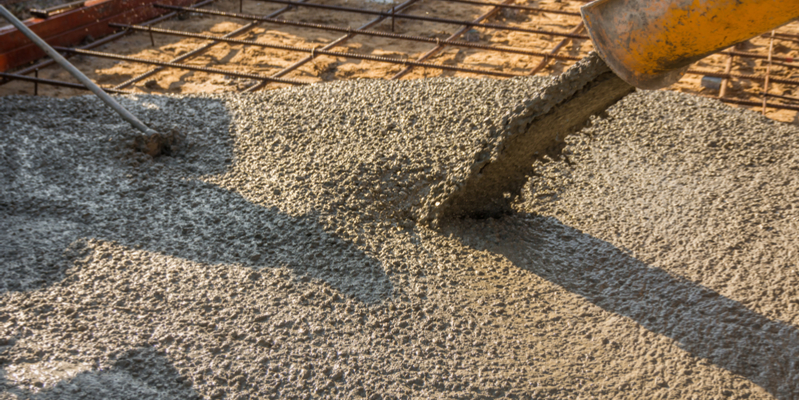Cracks are going to form in concrete no matter what you do, although, there are certain things you can do to reduce the risk of crack formation. Before we get into ways you can protect your concrete, here’s a look at common reasons concrete cracks in the first place.
4 Common Reasons Concrete Cracks
Concrete cracks for several fundamental reasons. Understanding these reasons can help you better protect your concrete.
#1. Shrinkage
Concrete is at its largest when it is first poured. As it sets and hardens, it shrinks by an average of 1/8 inch. This shrinkage can cause small cracks to appear, even in new construction.
#2. Internal tensile stress
Concrete is designed with a good deal of compressive strength, but not as much lower tensile strength. As a result, another common reason concrete cracks is because internal tensile stresses outweigh the tensile strength.
#3. Too much water in concrete mix
If there’s too much water in the concrete mix it will lead to a greater probability of cracks. The proper concrete mix can make a big difference in how well surfaces hold up.
#4. Improper sub-grade prep and/or curing
Other important elements of the construction process that can lead to cracks include sub-grade preparation and curing. If the sub-grade does not provide a solid base that can support the concrete, it is likely that cracks will quickly form. In addition, proper curing is crucial to the development of strong concrete surfaces.
5 Tips to Prevent Concrete from Cracking
#1. Add Contraction Joints
Concrete is known to crack in random spots, and therefore, attention to detail must be taken during the construction process to help prevent these cracks from getting out of control. Contraction joints are pre-made cracks in concrete slabs that help reduce pressure on the concrete and give it more flexibility, thus reducing the risk of random cracks.
Contraction joints can be made using plastic or hardboard preformed strips, as well as saw cuts or tooled into plastic concrete. In order for the joints to work effectively, they must be properly placed and at the appropriate depth. Keep in mind, maximum joint spacing is 18 feet. In addition, the length-to-width ratio of joint patterns should not go over 1.5. Ideally, the “panels” should resemble a square.
As far as depth is concerned, construction joints are generally ¼ the thickness of the concrete slab. By jointing the concrete you create a “point of weakness” that can dictate where the concrete cracks.
Contraction joints should be added as soon as possible, typically within 6 to 18 hours after the concrete is poured. Making cuts more than 24 hours later increases the risk of cracking. With early saw entry, cuts may be made as soon as a few hours after placement.
#2. Make Sure Concrete Properly Cures
Properly cured concrete is less likely to crack. Therefore, it’s so important that concrete cures in ideal conditions. Generally speaking, it takes around 7 days for moist curing to complete. The longer concrete is cured, the longer it will last before showing signs of cracks, as well as overall wear and tear.
#3. Seal Joints
This step is not always necessary, but in some cases, it can help further protect the concrete against water infiltration, and ultimately, cracks. If water gets beneath the surface it can cause the sub-grade to fail. In addition, spalling may also occur. Sealant should be applied after the concrete has finished curing so that it does not interrupt the shrinkage process.
#4. Don’t Overload Surfaces
Be mindful of weight limits and do not overload concrete surfaces. This is especially important during the curing process.
#5. Trust Turnbull Masonry
You can trust us to install, repair and maintain top-notch concrete surfaces. Contact us today to get a quote or to learn more.

